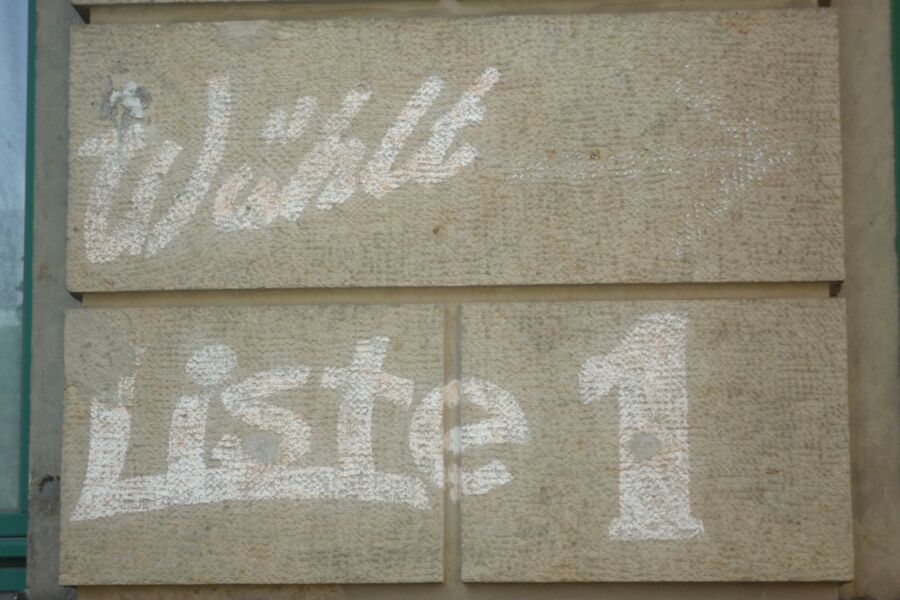
Vote for list 1!
At the front of 2 Pulsnitzer Straße there is still an inscription from the era of the Weimar Republic visible. The call for vote was probably painted there in July 1932. Supporters of the social democrats (SPD) had written “Vote for list 1!” on many house walls with stencils. The paint formed a solid chemical bond with the brickwork and has thus lasted until today.
On July 11th, 1932, the social democrats’ first election rally and a fair of Neustadt workers, gymnasts and sportspeople took place. To close the event ceremonially, a pageant went from Kamenzer Straße/Nordstraße across the entire neighbourhood.
20 days later, the Reichstag election took place. In the districts Antonstadt (today “Äussere Neustadt”), Pieschen, Mickten, Übigau and Trachenberge, the social democrats and the communist party (KPD) achieved 29,000 and 11,000 votes respectively. Together they were thus almost double as strong as the Nazi party (NSDAP) with 21,000 votes. In the entire electoral constituency Dresden II/Bautzen, the social democrats achieved 31.1 %, the communist party 14.3 %, and Nazi party 39.3 %, at an electoral turnout of 86.4 %.
Since no party was willing to form a coalition with the Nazi party or the communists, a majority rule did not come out. What followed were re-elections on November 6th, 1932. With a turnout of 82 %, the constituency sent 6 delegates for the Nazi party to Berlin, 5 for the social democrats, and 3 for the communist party. In the Reichstag, the arch-enemies NSDAP, the strongest party, and the KPD formed a negative majority again. In order to avoid civil war, President Hindenburg agreed to appoint Hitler to chancellor, thus paving the way for him to seize power in January, 1933.
Let’s leap into the 1990s: After the political change, the ‘great clean-up’ started after decades of decay in the “Äußere Neustadt”, the first reconstruction area in Dresden. The ramshackle old buildings were modernized and house fronts were cleansed. At this building, the inscription “Gustav Jacksch, tailor for civil and military garments” above the ground floor windows disappeared. It had been commemorating a Bohemian businessman since the construction of the house. The election canvassing, however, remained untouched. On the one hand, its elimination would have been quite expensive. On the other hand, rumour has it that a Neustadt resident kept a construction worker from clearing it away by offering him a crate of beer.








